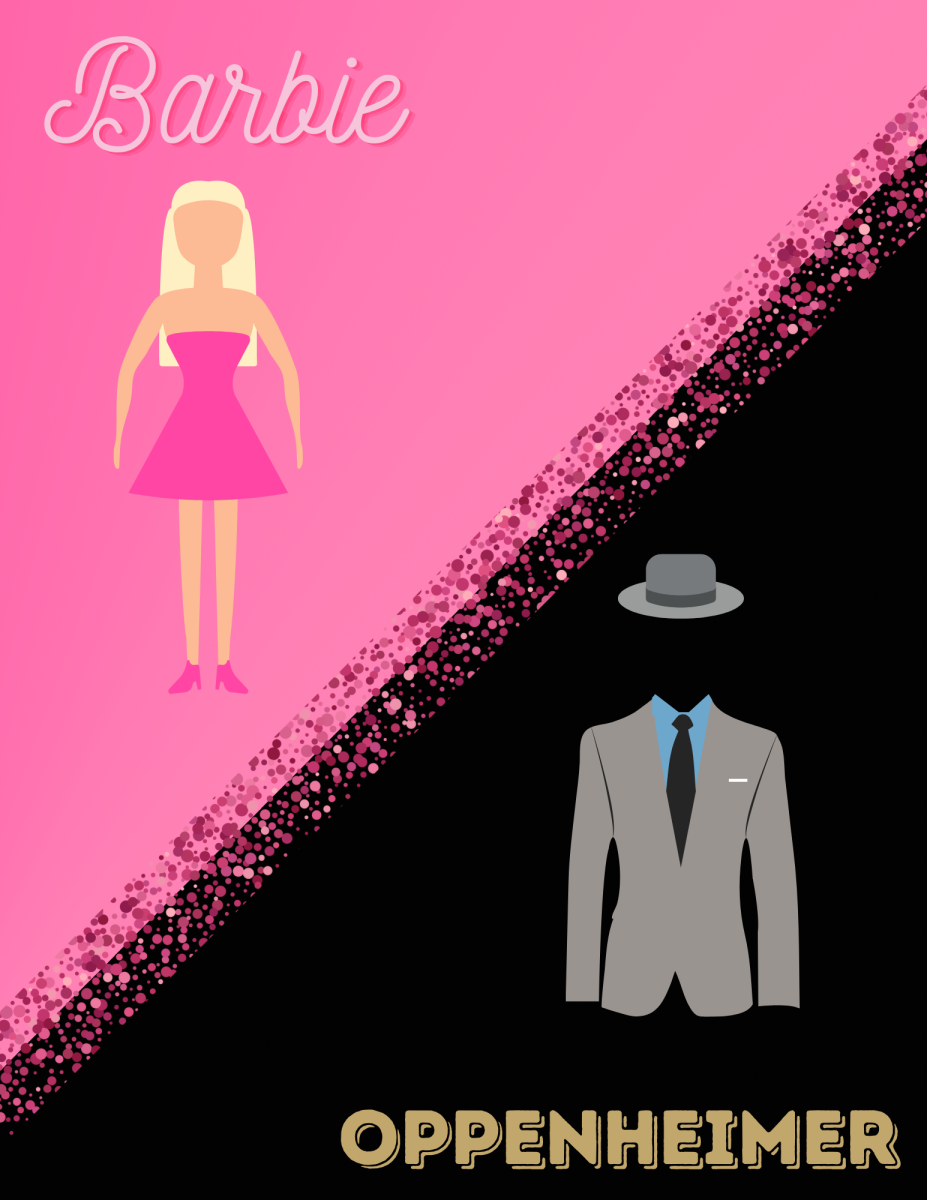Content warning/Editors note: this review will feature spoilers for “Barbie” and “Oppenheimer” (2023)
Over the summer, the premiere of the movies “Barbie” and “Oppenheimer” dominated the box office. Because of both the movies premiering on the same day, the internet took these two completely different films and combined them into what is now called “Barbenheimer.” Although both movies received an immense amount of attention and praise, are they really worth the hype?
“Barbie,” directed by Greta Gerwig, takes place in a fictional world called “Barbieland” where all of the Barbies and Kens live. They are not free-thinkers, but simply plastic dolls controlled by humans in the real world, using their thoughts and actions to exist in Barbieland. In this fake, plastic world, stereotypical Barbie (Margot Robbie) feels an unstable amount of anxiety towards growing older and dying. These irreversible thoughts of death cause her to seek out the human controlling her in the real world. She doesn’t do it alone, however Ken (Ryan Gosling) invites himself to go with her, unaware that the exposure to the real world will make them both ask the question, “what was I made for?” At the end of the movie, there is a montage of the different experiences humans have in the real world. Over this montage is a song, created for the movie, called “What was I made for?” by Billie Eilish. This song describes the thoughts and feelings of Barbie and Ken’s existential crisis, but in a calm, artistic way.
Visually, “Barbie” doesn’t seem like a movie that would address world issues. It seems like a cookie cutter kids movie where the only thing original is an all pink set design, but behind all of the pink walls and plastic faces, there is deep rooted prejudice and patriarchy at the very base of Barbieland. In Barbieland, society is controlled by the Barbies. They take care of all job positions and government legislators. The Kens’ only jobs are beach and worshiping Barbie. In the real world, Ken learns about the existence of patriarchy and applies it to Barbieland by force, in effort to gain recognition from Barbie, instead of being treated like an afterthought.
The humor, cast and addressing the social and mental impact of patriarchy makes me understand why the media loved this movie. Everything in the movie wasn’t specifically tailored to only one audience. I thought it would be a kids movie but there was something for everyone, whether it was a witty joke, dazzling outfit or a monologue on how difficult it is to live in a society where everyone is constantly so worried about everyone else, that they forget to worry about themselves.
“Oppenheimer,” directed by Christopher Nolan, goes into depth about the mental and physical weight of war, not only on Robert J. Oppenheimer, the “Father of the atomic bomb” (Cillian Murphy), but the controversy and political climate surrounding science as a whole.
The movie itself sits at a whopping three hours and nine seconds, so if you’re looking for a new movie to see and “Oppenheimer” is one of your picks, be prepared to settle in for a long time. I will admit, the first hour of the movie is slow for viewers, but it does give quite a bit of background knowledge and context for who Oppenheimer was as a figure in the science field. What really made me enjoy this movie was that unlike Barbie, “Oppenheimer” is not meant to be a feel-good movie. Its purpose is to be completely truthful about what happened in the use of the atomic bomb, without any kind of sugar-coating.
The visuals of “Oppenheimer” are meant to make the viewer feel the pressure and guilt that Oppenheimer felt. Flashes of solar flares, spinning stars and supernova blasts are sprinkled throughout scenes of the movie. Towards the end of the movie, there’s a scene where Oppenheimer is standing in front of an audience of his colleagues also working on the project. He announces that the war is over and the Japanese are defeated, but the viewer sees a blinding light, then a visual of his colleague’s faces melting away. While everyone else is cheering, Oppenheimer feels an immense amount of guilt toward the people being slaughtered by the bomb he created.
One thing that stuck out to me in both “Barbie” and “Oppenheimer” was the casting. So many big names and recognizable faces were seen throughout each movie, but even though people recognized the actors and actresses, their involvement didn’t distract audiences from the actual plot of the movies.
If you’re looking for new movie to watch on a cozy night in, or a vibrant summer pool party, I recommend both “Barbie” and “Oppenheimer.” Both movies are great for adults, but I do not recommend younger children watching “Oppenheimer” because of its R rating and content. Barbie is rated PG-13 because of “suggestive references” and “brief language”













